Smrt pod ledovou peřinou
Death under an icy duvet

F/O Josef Mohr.
Jeden z nejúspěšnějších letců severních Čech, Josef Mohr, se narodil 5. října 1912 ve Velkých Hamrech.
One of the most well known pilots from northern Bohemia, Josef Mohr was born on the 5th October 1912 in Velké Hamry.
Po maturitě na pražské průmyslové škole nastoupil na dva roky do školy leteckého dorostu, po jejímž absolvování byl vyřazen v hodnosti poručíka jako letecký pozorovatel. Jeho kmenovou jednotkou byla 10. letka, III. leteckého pluku M. R. Štefánika v Nitře.
After graduating from a Technical School, in Prague, he enrolled for two years at the Military Aviation School. He graduated as a aeronautical observer, with the rank of Lieutenant, and was posted the 10 Sqn of the 3rd Flight Regiment, stationed at the Milan Rastislav Stefanik airbase at Nitra, Slovakia.
I on patřil do zdravého jádra našeho předválečného letectva, nemohl smířit s násilnou okupací Československa Německem a proto se rozhodl opustit republiku a postavit se Němcům se zbraní v ruce…
He was also one of the patriotic group of our pre-war Air Force, who could not come to terms with the forceful occupation of Czechoslovakia by Germany. This is why he decided to leave the Republic and face the Germans with a gun in his hand.
Ilegálně odešel do Polska. Internován byl v Ligotce Kamarelné a koncem května 1939 přemístěn přes Těšín do Krakova. Zde však narazil na neochotu a nezájem Poláků, kteří odmítli jeho vojenské zkušenosti. V červenci 1939 proto odjel s transportem do Francie a vstoupil do Cizinecké legie. Čekala ho krutá, nejméně pětiletá služba v Africe. Ze svazku Cizinecké legie jej vysvobodil až začátek války.
He illicitly left for Poland. Initially, he was interned at Ligota Kameralna and from here, at the end of May 1939, he was transferred via Tešin to Krakow. However here he faced reluctance and disinterest from the Poles, who refused his military experience. This was the reason why, in July 1939, he departed by transport to join the French Foreign Legion. He was obliged to commit to at least five years of their hard service in Africa. The outbreak of war freed him from this obligation with the French Foreign Legion.
Byl přemístěn do Tours a zařazen do pozorovatelského a střeleckého výcviku. Francouzský přeškolovací program byl dosti neorganizovaný a velmi laxní. Josef do bojů ve Francii už nestačil zasáhnout. Byl evakuován do Casablanky, ze které poté odplul 28. 6. 1940 lodí „Gibt-el-Dersa“ do Gibraltaru. Zde byla loď zařazena do velkého konvoje, směřujícího k anglickým břehům.
He was transferred to Tours, France and posted to a observer and gunnery training course. The French retraining programme was rather disorganised and very lax. Josef didn’t get the chance to take part in combat in France. When France capitulated, he was evacuated to Casablanca, from whence he then sailed to Gibraltar on the ship “Gibt-el-Dersa” on 28th June 1940. Here the ship joined a large convoy that would be heading for the shores of England.
Dne 5. 7. 1940 odplul, již na palubě lodi „Cidonia“, do Anglie. Na její břeh vstoupil 16. července 1940. Vstoupil do RAF v hodnosti Pilot Officer (podporučík), od 16. srpna do 6. září se v Bassingbourne cvičil na funkci navigátora bombardéru. V květnu 1941 byl z navigačního výcviku úspěšně vyřazen a určen do operační posádky F/Lt Breicetla a následně Sgt. Adolfa Musálka.
On 5th July 1940, now aboard the ship “Cidonia”, the convoy sailed away to England. He set foot ashore on 16th July 1940. He entered the RAF with the rank of P/O, and from 16th August to 6th September, was posted to RAF Bassingbourn, Cambridgeshire, for Navigator training. He successfully completed his Navigator training and was posted to 311 Sqn where he joined the operational aircrew of F/Lt Breiceitl and subsequently Sgt Adolf Musálek.
Operačně aktivní navigátor Josef Mohr, příslušník 311. československé bombardovací peruti RAF se v roce 1941 zúčastnil počáteční fáze bombardovací ofenzívy proti Německu. V této době bylo ještě noční bombardovaní průkopnickou činností. Velmi složitá byla zejména navigace, často se stávalo, že posádka hlásila, úspěšné bombardování cíle, ale pravda byla taková, že bombardovala “cíl” o desítky mil vzdálený. To však neplatilo u československé bombardovací peruti. Její posádky patřily k tomu nejlepšímu, co mělo Velitelství britského bombardovacího letectva k dispozici. Piloti nalétávali v prudké a husté protiletadlové palbě na cíl čtyřikrát i pětkrát, jen aby zásah byl co nejpřesnější. Zejména navigátoři patřili mezi skutečnou elitu britského Královského letectva. K těmto hrdinům a profesionálům patřil i P/O Josef Mohr.
As a operationally Navigator with 311 Sqn, Josef Mohr, took part in the opening phase of bombing offensive against Germany. During this period, night bombardment was a pioneering activity. Navigation was especially complex, it often happened that the crew reported the successful bombing of the target when the truth was such that they had bombarded a “target” dozens of miles away. This, however, wasn’t the case of the Czechoslovak bomber squadron. Her crews were some of the best, that RAF Bomber Command had at its disposition. The pilots would fly over the target, in fierce and thick flak, four even five times in order to make the hit as precise as possible. The Navigators especially belonged to the true elite of the RAF. P/O Josef Mohr belonged to this group of heroes and professionals.
Zúčastnil se neuvěřitelných 35 bojových akcí v trvání bezmála 200 operačních hodin. Pro ilustraci uvedu pár příkladů:
He participated in a incredible 35 combat missions totalling almost 200 operational hours. A few examples to illustrate these missions:
V noci z 3.na 4.7. 1941 – nálet na Kruppovy závody v Essenu – doba letu 4hod.33min.
On the night from 3rd to 4th July – air raid on Krupp factories in Essen, a flying time of 4 hrs 33 min.
V noci z 5. na 6. 7. 1941 – nálet na Münster doba letu 4hod. 29min.
On the night from 5th to 6th July 1941 – a 4 hr 29 min flight on a raid on Munster.
V noci z 12. na 13. 8. nálet na Hanover- doba letu 6hod. 24min., při příletu k vlastnímu letišti byl letoun napaden německým stíhačem. Pilot Sgt. Šiška odvážným manévm unikl a nouzově přistál. Posádka nezraněna.
On the night from 12th to 13th August – air raid on Hannover – the aircraft was attacked by a German fighter aircraft during as they returned to their base at East Wretham. Pilot, Sgt. Siska, using a brave manoeuvre, evaded the attack and made an emergency landing. The crew were unharmed, flight time was 6 hrs 24 min.
V noci z 19. na 20. srpna po úspěšném náletu na Kiel, doba letu 7 hod. 22 min, byli opět nad vlastním letištěm v East Wretham napadeni německými stíhači. Velitel letounu Sgt. Šiška nařídil posádce aby po přistání letoun okamžitě opustili. Celá posádka po dokončení výběhu letoun rychle opustila a ukryla se na zemi mimo letoun. Krátce poté v jejich blízkosti dopadlo na zem několik pum a dva členi posádky byli zasypáni hlínou a popáleni od střepin z vybuchlé bomby.
On the night from 19th to 20th August after a successful air raid on Kiel, involving a flight time of 7 hrs 22 min, they were again attacked by a German fighter above their base at East Wretham. Sgt Šiška ordered the crew to leave the aircraft immediately after the landing. The crew got out and took cover on the ground; the next moment several bombs hit the ground in their vicinity and two of the crew were covered with soil and were burned by shrapnel of the exploded bombs.
V noci ze 7. na 8. září – při náletu na Berlín – doba letu 7 hod. 45 min. střepiny z flaku prorazily u kyslíkových lahví potrubí. P/O Mohr objevil včas poškození kyslíkové soupravy letounu a oznámil to každému členu osádky dříve než k vůli nedostatku kylíku ztratili vědomí.. Tím zachránil celou osádku. Díky tomuto včanému zjištění závady na kyslíkové soupravě pilot Sgt. Šiška mohl přepnout řízení letounu na automatického pilota v mírném klesání. Poté osádka letounu upadla do bezvědomí z něhož se probrala až o 3 hodiny později, když je ostřeloval flak nad Holandskem. Ještě tři dny po letu člennové osádky vykašlávali krev. Přesto letěli na další misi.
The night from the 7th to 8th September he was on an air raid to Berlin – flak shrapnel penetrated the oxygen tubes right by the oxygen bottles. P/O Mohr discovered this problem and reported it seconds before the whole crew passed-out due to the lack of oxygen. P/O Mohr actually saved the crew. Thanks to this discovery, the pilot, Sgt Šiška, was able to switch on the automatic pilot in a slow descend mode. They didn’t recover until three hours later in flak above Holland. Their flight time had been 7 hrs 45 min. Three days after the flight, the aircrew were still coughing up blood, but they flew on a new mission anyway!
V noci z 12. na 13. září – nálet na Frankfurt am Main, doba letu 6 hod. 6 min.
On the night from 12th to 13th September – an air raid on Frankfurt am Main, the flight duration had been 6 hrs 6 min.
V noci z 15. na 16. září – nálet na Hamburk. Nad Orenburgem museli akci přerušit pro napadení nočním stíhačem. Posádka aby setřásla manévrováním stihače, odhodila pumy a vrátila se na letiště. Doba letu 4 hod. 11 min.
On the night from 15th to 16th Sept. – air raid on Hamburg – the action was interrupted by a night fighter above Oldenburg. The crew jettisoned the bombs and had hard time to shake off the fighter. The flight time had been 4 hrs 11 min.
V noci z 26. na 27. září – při náletu náletu na Janov, Itálie – doba letu 9 hod. 53 min., prokázala celá posádka výbornou spolupráci. Nálet na Janov byl odvolán z důvodu bouřky. Česká posádka však nedostala zprávu a odvážně vzlétla. Po svém návratu do východního Wretham poté, co přistáli s posledními kapkami paliva zjistili, že v této noci byli pouze jedinou osádkou RAF nad nepřátelským územím.
On the night of 26th to 27th Sept. – during a raid air raid on Genoa, Italy – the whole crew demonstrated excellent cooperation. The air raid on Genoa was called off because of an electrical storm. The Czech crew, however, did not receive the message and courageously flew on. On their return to East Wretham, having landed with the last drops of fuel, they found out they had been the only RAF crew above the enemy territory that night! They had been flying for 9 hrs 53 min.
V noci z 28. na 29. září 1941 – opět nálet na Janov – Mise trvala 10 hodin 30 min a tato doba letu byla nejdelší dobou letu dosažené příslušníky 311. Sqn v Bomber Command s letounem Vickers Wellington.
The night from the 28th to 29th Sept. – again on an air raid on Genoa – the mission lasted 10 hrs 30 min and was the longest flight of any of the Wellingtons of 311 Sqn in Bomber Command, it had lasted 10 hrs 30 min.
V noci z 12. na 13. října 1941 – nálet na Norimberk, – doba letu 7 hod. 40 min.
The night from 12th to 13th Oct. – air raid on Nuremberg, they had been flying for 7 hrs 40 min.
Další nálety vedou opět nad Kiel, Hamburk, Berlín atd.
Further air raids again on Kiel, Hamburg, Berlin, etc.
28. prosince 1942 má být posledním letem operační túry. Nadporučík Josef Mohr se chystá na svůj poslední let před nástupem na půlroční odpočinek. Spolu s kamarádem nadporučíkem Josefem Ščerbou, telegrafistou jeho posádky, chystají plány na silvestrovskou oslavu. Josef přemýšlí o svatbě se svojí anglickou přítelkyní. Nikdo si nepřipouští, že by mohl padnout, pravda byla však jiná.
28th Dec 1941 was due to be the last flight of the operational tour. Lt Josef Mohr is prepared for his last mission before commencing a six months rest. Together with his friend F/O Josef Ščerba, radio operator of his crew, they are making plans for celebrating New Year’s. Josef is considering getting married to his English girlfriend. Nobody would admit that they could be killed in action, but the reality proved them wrong.
„V noci z 28. na 29.12.1941 provedla 311. (československá) bombardovací peruť jeden další ze svých mnoha úspěšných náletů na území obsazené nepřítelem. Tentokrát dopadl smrtící náklad na německý přístav Wilhelmshaven. Velitelem jednoho z útočících Wellingtonů byl Alois Šiška. Jeho stroj byl nad cílem zasažen protiletadlovou palbou. Asi 20minut po bombardování začal hořet levý motor, oheň se však podařilo uhasit. Posádka pokračovala v letu jen na jedem motor, radiotelegrafista navázal spojení s Anglií na nouzové vlně. Zakrátko se u nefunkčního motoru utrhla vrtule a zasekla se do trupu v místě telegrafistova stanoviště. Hydraulický systém byl poničen, letadlo se stalo neovladatelným…
“In the night from the 28th to 29th December 1941, 311 (Czechoslovak) Bomber Sqn executed another one of their many successful air raids on the territory occupied by the enemy. The lethal cargo hit the German harbour of Wilhelmshaven this time. Alois Siska was the pilot of one of the attacking Wellingtons. His aircraft was hit by the flak above the target. The left engine caught on fire about 20 min after the bombing, however, the fire was extinguished. The crew continued the flight with one engine only, radio operator made contacted with England on an emergency wavelength. Not long after, a propeller blade tore off from the non-functional engine and got embedded into the fuselage by the wireless operator’s position. The hydraulic system was damaged and the aircraft became unmanageable…
Pilotovi se s vypětím všech sil podařilo nouzově přistát na hladinu Severního moře. Při nouzovém přistání zahynul zadní střelec Rudolf Skalický. Zbytku posádky se podařilo dostat se do záchranného člunu. Musela však čelit krutým podmínkám ledového Severního moře. Navigátor letounu, Josef Mohr, ztratil při nouzovém přistání boty a kuklu. Přesto však ostatním druhům v dinghy dodával kuráž a živil tak naději na záchranu. Vydržel to celých neuvěřitelných pět nocí. 2. ledna 1942 těsně po půlnoci, umírá druhý pilot Josef Tománek. Josefu Mohrovi již došly poslední zbytky sil. Zemřel naprosto vysílen nedlouho poté, ve dvě hodiny ráno. Pilot Šiška, telegrafista Ščerba a střelec Svoboda měli více štěstí. Moře je kolem 15. hodiny 3.1.1942, po šesti krutých dnech v mokru a mrazu, vyvrhlo na holandské pobřeží…“
The pilot managed with great effort to make an emergency landing on the surface of the North Sea. Air The Gunner Rudolf Skalický was killed during the emergency landing. The remainder of the crew managed to climb into the life dinghy. However, they had to face the cruel conditions of the ice cold North Sea. The Navigator of the aircraft, Josef Mohr, lost his shoes and flying helmet during the emergency landing. Even then he gave courage to the his comrades in the dinghy and thus fuelled their hope of a rescue. He persevered for five incredible nights. On 2nd January 1942, shortly after midnight, the co-pilot Josef Tománek died. Josef Mohr also runs out of all his strength. He died totally exhausted not long after that, at 2 am. The pilot Siska, wireless operator Ščerba and gunner Svoboda had better luck. The sea disgorged them onto the Dutch coast at about 3 pm on 3rd Jan 1942, after six cruel days in icy and wet conditions…”

Josef Mohr je pohřben na holandském hřbitově v Bergenu.
Josef Mohr is buried in the Bergen General Cemetery, at Bergen, Holland.
Za bojové nasazení byl vyznamenán:
For his Military service, he was awarded by Czechoslovakia:
![]()
3x Československým válečným křížem 1939, [Czechoslovak Military Crosses 1939]
Medailí za chrabrost, [Gallantry Medal]
Za zásluhy I stupně, [Medal of Merit 1st Grade]
Pamětní medailí armády v zahraničí se štítky F a VB, [Commemorative Medal of the army abroad with France and Great Britain bars].
Britové jej ocenili:
For his Military service, he was awarded by Britain:
![]()
1939-45 Star
Air Crew Europe Star
War Medal
Dne 6. ledna 2012 se uskutečnilo u hrobu rodiny Mohrovy ve Velkých Hamrech vzpomínkové setkání.
A commemoration and remembrance meeting took place on 6th Jan 2012 at the Mohr family grave in Velké Hamry.
V listopadu 2017 bylo jeho jméno připomenuto mezi dalšími 2500 československými muži a ženami, kteží sloužili v průběhu druhé světové války v RAF, na pomníku okřídleného lva na pražském Klárově.
In November 2017, his name, along with the names of some 2500 other Czechoslovak men and women who had served in the RAF during WW2, was unveiled at the Winged Lion Monument at Klárov, Prague.

Čest jeho památce!
Lest we forget!
Jan a Milan Votavovi
Jan and Milan Votava
Article last updated : 18.01.2019

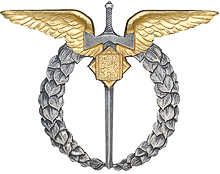




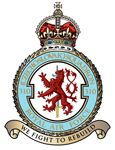
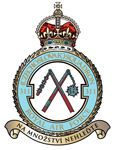
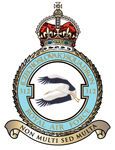
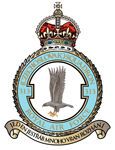


Dobrý den, jsem vedoucí turistického oddílu mládeže ve Velkých Hamrech, kde i celý život bydlím. Teprve minulý týden jsem se dozvěděl, že zde má jeho rodina hrob (někdo říká že dokonce i pomníček). Abych pravdu řekl, ani nevím kde, snad se to dozvím na úřadě. Něco jsem již o panu Mohrovi věděl či zjistil ale za každé další informace, fotografie a nebo kontakty na příbuzné ( i v zahraničí) budu velmi vděčný. Chtěl bych se s úřadem domluvit a o pomník, tedy jestli je, se s oddílem v rámci výchovy lásky k tradicím a místu kde bydlíme, starat. V případě hrobu rodiny bych určitě potřeboval svolení rodiny. Velice Vám děkuji. Jirka
[Moderators translation: Good day, I am a leader of a youth tourist association in Velké Hamry, where I have also lived all of my life. Only last week did i find out, that his family has a grave here (some say even a small memorial). To tell the truth, I don´t even know where,hopefully I can find that out in the council office. I knew or found out a bit about Mr. Mohr, but i would be very grateful for any further information, photos or contacts to relatives (even abroad). I would like to make a deal with the local authorities, and if the memorial indeed exists, together with the association we would take care of it – in the frame of education in love of traditions and the place where we live. In case of the grave I would certainly need family permission. Thank you very much indeed. Jirka]
We never forget!
May he rest in peace. The brave crew of kx-b will not be forgotten!
We visited his grave with a Czech, British and Dutch delegation on 4-2-2012 and layed flowers. A special moment.